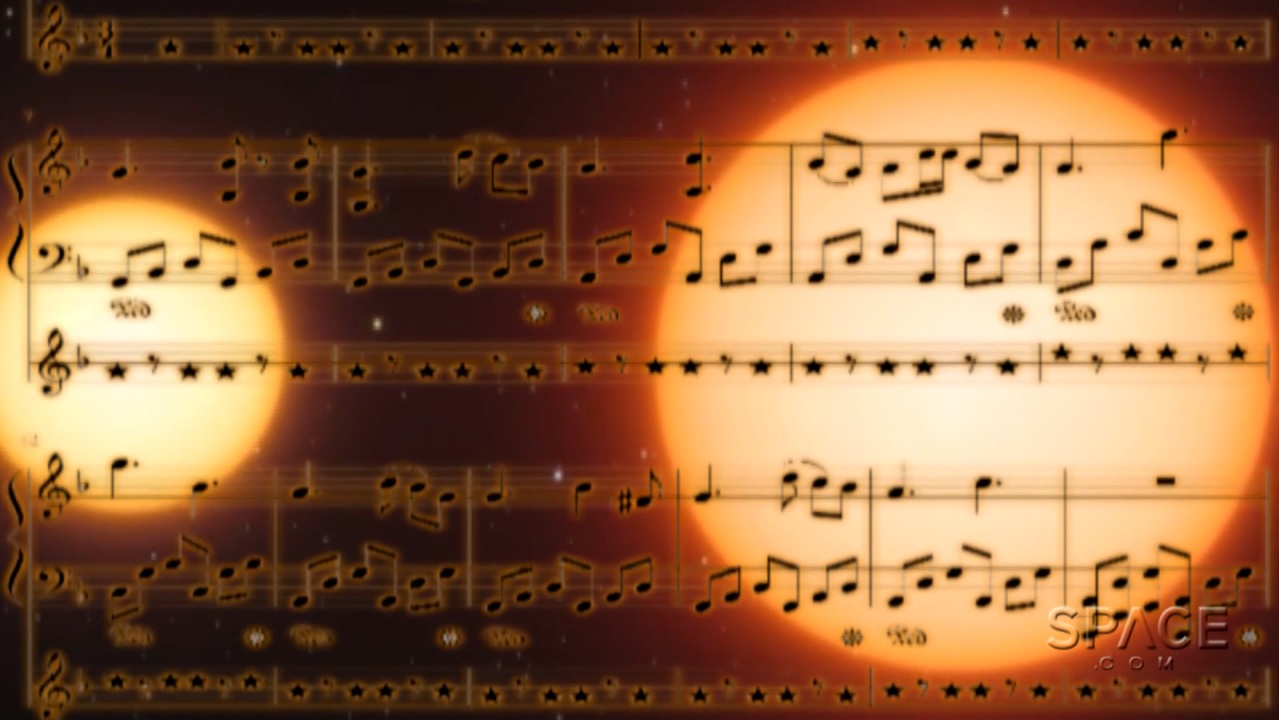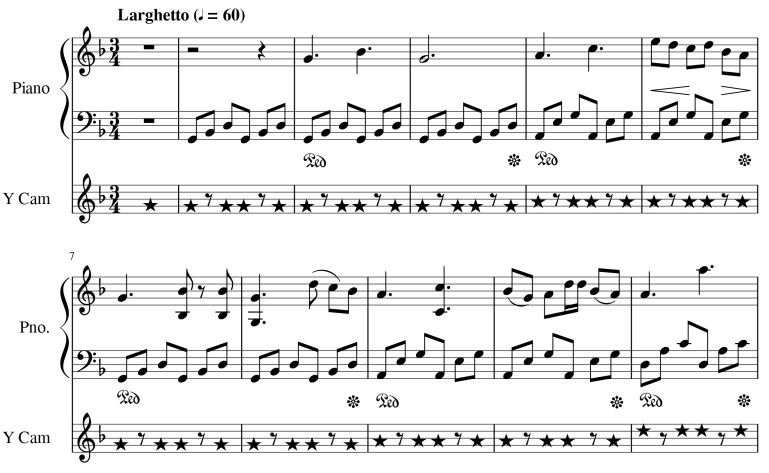Star Tunes: Composer Sets Twinkling Data to Music

An astronomer and amateur musician has coaxed a haunting melody from a star's distinctive twinkle.
The twinkling star is one of two in a binary system called Y Cam whose two stars orbit very close together. The pulsing frequencies that Y Cam A beams toward Earth form the basis of the chords and musical scale used in the composition.
Burak Ulaş, an astronomer at the Izmir Turk College Planetarium in Turkey, started the project after finding, in an earlier study, that the star Y Cam A's vibrations closely match a particular, unusual musical scale. Out of 28 stars, matching with 57 musical scales, Y Cam A's vibrations came closest to the intervals in a real-life scale. [Watch: Astronomer Makes Music From A Ringing Star]
"Think of that: This star oscillates in a musical scale that we listen [to] in some songs in the world," Ulaş told Space.com. "Fascinating!"
By measuring the very slight changes in a star's brightness, researchers can discern the vibrations beneath the object's surface, which reveal information about the star's internal structure. All stars, including Earth's sun, have their own unique, "ringing" vibrations — as do planets, although it is generally much harder to find traces of this. (The signs are rare, like slight variations in Saturn's rings.)
Y Cam A in particular oscillates in four different frequencies, which Ulaş matched to notes in the diminished whole-tone musical scale, with its jazzy, dreamy character.

Get the Space.com Newsletter
Breaking space news, the latest updates on rocket launches, skywatching events and more!
Researchers think that those vibrations, and the ties to that musical scale, are intrinsic to the star itself rather than a function of its close orbit with another star: "Some studies claim that the pulsating stars in binary systems — and their pulsation frequencies — can be affected slightly by tides and rotation because of being a companion in the system," Ulaş said. "However, in the situation of Y Cam A, it seems just the inner structure of the primary component is responsible for the four observed frequencies."
Ulaş coaxed four chords from the star's oscillations as well, by translating the many frequencies into the audible range for humans. Then, he composed an original melody in the diminished whole-tone scale to play against the buzzy tones generated by the star. He called the composition "Awkward Keystrokes of Y Cam."
Ulaş said he hopes to build on the idea by composing for several different stars matched to different musical scales. And he said he ultimately aspires to a sort of "symphony of the stars" that combines their unique sounds together. [NASA Moon Probe Broadcasts Space Weather Symphony Live]
"As an amateur musician and a professional astronomer, space-based sounds are always affecting me," Ulas said. "I plan to improve the musical composition with pulsating stars by choosing many stars and musical instruments."
Ulaş added that the challenge will be finding a way to incorporate different musical scales, fitting the different stars into one orchestral piece, and that he's open to suggestions, comments and support from musicians and astronomers with ideas for how to incorporate the sounds of many different stars.
Listen to the full piece here: Awkward Keystrokes of Y Cam by Burak Ulaş
Email Sarah Lewin at slewin@space.com or follow her @SarahExplains. Follow us @Spacedotcom, Facebook and Google+. Original article on Space.com.
Join our Space Forums to keep talking space on the latest missions, night sky and more! And if you have a news tip, correction or comment, let us know at: community@space.com.

Sarah Lewin started writing for Space.com in June of 2015 as a Staff Writer and became Associate Editor in 2019 . Her work has been featured by Scientific American, IEEE Spectrum, Quanta Magazine, Wired, The Scientist, Science Friday and WGBH's Inside NOVA. Sarah has an MA from NYU's Science, Health and Environmental Reporting Program and an AB in mathematics from Brown University. When not writing, reading or thinking about space, Sarah enjoys musical theatre and mathematical papercraft. She is currently Assistant News Editor at Scientific American. You can follow her on Twitter @SarahExplains.









